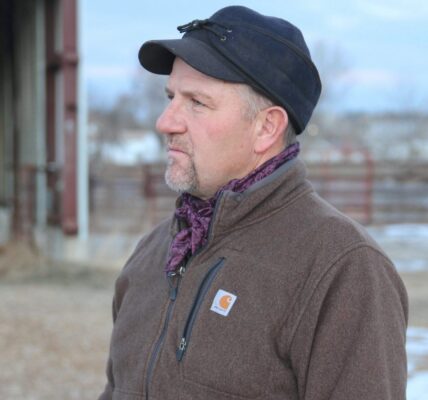By Hannah Black
Wyoming Tribune Eagle
Via- Wyoming News Exchange
CHEYENNE – About two weeks into the COVID-19 vaccine’s distribution in Wyoming, the focus is still on frontline medical workers, some first responders and people living in long-term care facilities – in other words, those most vulnerable to the virus.
But the process is rolling along, with 75-80% of people in the 1A priority group having so far been offered the vaccine, said Kathy Emmons, executive director of the Cheyenne-Laramie County Health Department. Emmons said about 60% of those eligible have chosen to receive the vaccine so far, similar to what is being seen nationally.
Cheyenne Regional Medical Center President and CEO Tim Thornell said the rate is similar for hospital staff. Those electing not to immediately receive the vaccine aren’t saying no to it, Thornell said – they just don’t want to be among the first. Ultimately, he hopes “upwards of 80%” of staff will opt in.
People living in long-term care facilities may begin to receive the vaccine “in the coming week,” and the 1A group is expected to be complete in the next 10 to 12 days, Emmons said.
Those who fall into phase 1B – people 70 years of age or older, and frontline essential workers who interact with the public and cannot consistently physically distance – will come next. A yet-to-be-determined 1C priority group is also expected before the state moves on to phase two, Wyoming Department of Health spokesperson Kim Deti said Thursday.
Phase two will prioritize critical workers, people with underlying conditions, people living in congregate setting and people with limited access to vaccination services, though Deti stressed that things can change as more information becomes available.
While determinations about priority groups are made at the state level, the act of administering vaccines falls to local health departments.
Emmons said distribution is “going well,” with no unforeseen challenges arising so far. Those who have received the vaccination have not had any adverse reactions, and “people seem to be tolerating it well,” she said.
But fewer doses have been administered than Emmons would like. As of Thursday, the state had received 21,300 vaccine doses – 7,800 from Pfizer and 13,400 from Moderna, according to the state’s website. So far, 7,472 doses – 35% of those received – have been administered.
The state’s numbers don’t include vaccine doses received or administered by F.E. Warren Air Force Base, the Cheyenne Veterans Affairs Medical Center or tribal groups, Deti said.
The most difficult part of the distribution process, Emmons said, has been the logistics of scheduling appointments. Because the city-county health department is currently prioritizing high-risk groups, it must identify who is eligible within each group and schedule times for those people to come in and receive the vaccine.
“As long as we’re working within the priority groups, it takes a little bit longer because it’s not just like throwing open your doors and saying, ‘Everybody come get a vaccination,’” she said.
Close to 500 health care workers at Cheyenne Regional Medical Center will receive their second dose of the Pfizer vaccine next week, Thornell said, and 204 more received their first dose of the Moderna vaccine this week. Hospital staff will help vaccinate other area health care workers in the coming seven to 10 days, he said.
As health departments move closer to getting the general public vaccinated, the focus will be on providing enough access points so the vaccine can be readily available.
“We’re going to have to come up with lots of different avenues for people to access the vaccine, because we know that not everybody’s going to be able to come into our office or even get to a clinic,” Emmons said.
The biggest challenge, she said, will be recruiting enough health care workers to administer the vaccine. This may include retired nurses, or nurses who work in different venues who want to help out with vaccination clinics.
The state is expected to receive an estimated 975 doses each week in January, Emmons said.
Deti said the state is “a ways away” from the vaccine being widely available, and that supplies will remain limited and targeted to certain groups for a while.
“I know we’ve talked about that light at the end of the tunnel – we’re on this path, we’re so excited to be taking the steps we’re taking, but there are a lot of steps, and it’s going to take a while,” Deti said.
Those who receive the vaccine will not pay any fees, according to a state health department news release. Both of the currently authorized vaccines require two doses.






